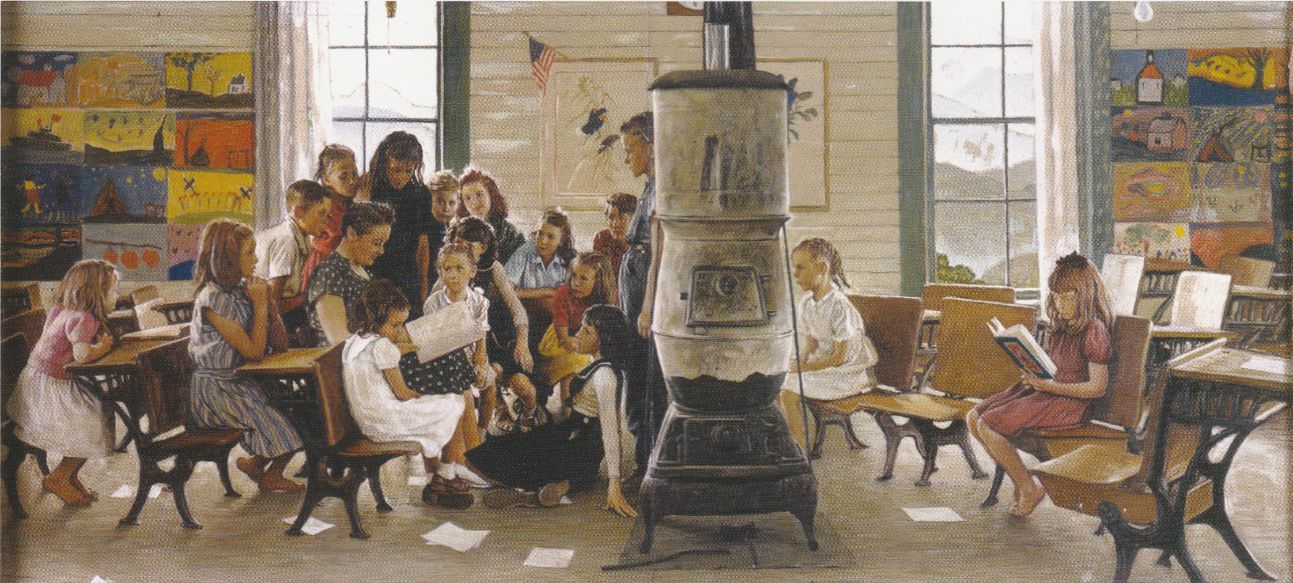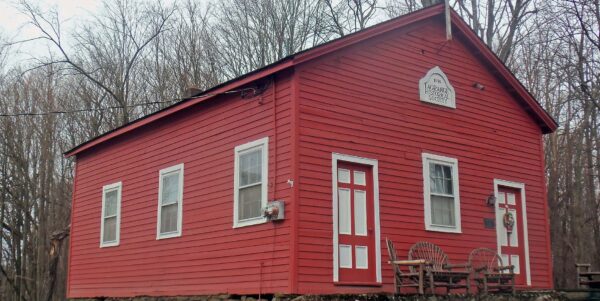Who wants to start a school? (Idle thoughts for a wet afternoon)
Well just about everyone it seems. We all went to school so we are all experts on education.

George Milne. 1980
And there’s money to be made. In a world anxious about the future, lots of it. So all kinds of entrepreneurs, chancers and/or idealists are starting their pop-ups or opening a franchise. The number of recently opened for-profit outfits is quite amazing. Many are relatively low cost, small budget – independent education that is affordable.
But leaving the profit-making aside. Who else wants to start a school?
Teachers, quite often. Frustrated with institutional straitjackets of curriculum or upset at some decision of the hierarchy, they yearn for the opportunity to do the job they love with greater autonomy.
And parents, who want something different from what’s currently available.
And often a combination of the two.
WHY?

This is an important question of course. Why are these people wanting their own school? What are they running from? And what is it they dream to build?
- To get away from them, whoever they may be. (So many indy schools opened up after school desegregation.)
- To escape from the onerous obligation to be responsible to necessary authority?
- To get a leg up in the college admissions process?
- For the perceived social prestige?
- To create the more perfect environment for one’s own special child?
- To make money
- To create the perfect job
- To create and experience a different approach to learning and community from those currently on offer: Schooling that is single-sex, less permissive and expensive, or more rigorous, traditional, demanding, progressive, disciplined, selective, specialized, caring, personal, open-minded, values-oriented, faith-based, creative, collaborative, inclusive, democratic, learner-centered, modern, future-focused, safe?

B. Mgoye
Figuring out what motivates you and your co-planners is key. Are you in sync with core values and foundational principles?
Have you even thrashed out the core values/ principles and established a sense of common purpose and shared vision? If not, you won’t make it together through the first year.
What?
Which of these phrases resonate as core ideas: transdisciplinary studies, environmentally aware, diverse community, traditional academics, religious fundamentals, mindfulness, personalized learning, community-based, ethical decision-making, the whole child, research-focused, play-based, 21st century, learner-centered, arts orientation, multiple intelligences, global perspectives. List all the educational cliches you can collectively think of – scout a few school missions to collect a few more – and get ready to dump them all as past their sell-by date. You are not in this to replicate the past nor compete in the same arena as the school down the road.

It’s wise to quickly uncover the school memories of your planning team. They can be powerful psychological drivers. And once uncovered distill useful themes – happiness, or persistent dread, for example – but do not let the past determine the future. Dismiss your own school experiences as a design template. The world has changed and – however good, or bad, your own education – the times demand something different. Rosy spectacles are great for nostalgic trips down memory lane, but learners deserve a clear-eyed focus on what they need now, and for their future. Immerse yourselves in conversations about that.
Plan to build an engine for student growth and learning and change and engagement and joy. Define what success looks like and how you can tell when students are flourishing. When you are up and running and thriving – what attitudes, aptitudes, skills and capacities will your graduates possess and take with them through life? Trackback how to build – intentionally and specifically – for those outcomes as you design your program’s systems and structures, policies and procedures.
Example: You say you develop independent thinkers?
So where in your program do you do that in significant ways? What does this look like in kindergarten? And in every subsequent grade? (This rather assumes you have grades, which, of course, does not have to be the case.) Tell the stories of the projects and processes where this happens. Do this exercise with your list of desired student outcomes. Connect the abstract with the lived experience. This is how you build the program and how you deliver on the mission and vision and give it life. This is something your community can talk about to prospective families. Do this exercise with all of those aspirational outcomes. Be intentional, and show the deliberate and practical connections between the talk and the day-to-day learning.)
So – spend time really digging into that. What resources and voices can help the group tackle those issues?
Remember: You are not alone. Others have taken – and are taking – the journey too. So many brilliant and interesting minds at work out there. Find the best of them and create community.
What and how will your planning unfold?

Two six-panel folding screens. Ink, color, gold, and silver on paper
Strategy and Vision
Think ahead to when your school is up and running.
Map out the future and design backwards accordingly. Take a trip to the future. Write the viewbook introduction for 2025. Take yourself on an admissions tour in 2023. Lst the bullet points of the year-end, state-of-the-school report for 2030. Take snapshots of what you see and hear. Sketch them out.
Ask yourselves:
- What are we really good at?
- What are our greatest strengths?
- What are we doing that no-one else around here is doing?
- How do those in the neighborhood see us? (How did we learn that?)
- How are we fulfilling our social and ethical responsibilities?
- What are we offering to families relative to their needs?
- Describe the school in three years, five years, ten years from now?
Then:
1, Articulate the school’s fundamental ideas. Agree upon the core ideas and beliefs that make your school distinctive. How does it stand out from the crowd? Why would anyone want to pay good money to attend when the competition is free?
2. Your niche. No school can be all things to all people. In a crowded market like a big city with many different schools, you can afford to specialize. Other places not so much and you will have to find a way to appeal to a broader section of the market. Nevertheless – what will you be known for? And is it something people actually want to pay for? Are there enough people who afford it? How will you know? (Demographic and market research to identify what your intended community is looking for. Without that you may be just spinning your wheels.)
What choices will your school make about what to include and what not to include? And where is that mission and statement of core principles that will help you make those choices when the opportunities arise for expansion?
In the language of Crane, What will be the school’s Category of One? Where it will outshine all the rest because it stands alone and stays true to a unique vision expressed in a unique mission.
3. Vision. Your vision is your directional system. Once you have a shared vision – and there are lots of great exercises to help your planning group develop something that is unique, exciting and marketable – then you need to find a way to come down to earth and make that vision viable and concrete. This is more than wordsmithing a mission statement. Rather it’s about distilling the dream school into something people can see and feel and want. Is it different? Is it authentic? Is it really you? Is it relevant to the community? Is the answer to their question and problems? And test again? Is it different? Is it authentic, really you? Is it relevant to the community?
Your Mission is the school’s engine that states your goals, priorities and purpose. It’s not a laundry list of vague intentions nor a treatise in philosophy. (By all means write those. In fact, you should dig deeply into the intellectual foundations of your thinking – keep them in mind, but tuck them out of sight.) Keep it short. Keep it pithy. Go for the heart – who are you? What do you do? To what end and why?
And when you have it – find the perfect 3-7 word tagline that sums it up.

4.Community: Think about your school as a place for students. (How are you doing? Are they thriving? What does thriving look like? How will you know?)
For families (How is it going? How are they feeling about the school? How do you know?)
And employees. (Is this a place where they really feel excited to come to work, where they can contribute, feel valued and are well-compensated for their efforts?)
Who knows about you in the marketplace? And what do they think about what they think they know? What is your reputation?
What will be your ongoing plan to ensure you are doing all that as well as possible?
Governance
At first, your school may be too small to be able to afford membership in regional and national organizations but take full advantage of the resources/ best practices they publicly provide about the crucial role of trustees. Get your bylaws – aligned with best practices – right and in accordance with state law. This is a time to bring in the lawyer – an attorney experienced in nonprofit law.
Bylaws are the school’s corporate constitution. They need enough detail to guide the school and establish the basic structure but they are not the place to signal your aspirations and good intentions. They should be a clear working framework for essential functions. Be careful not to create a strait-jacket for the future, Think about creating a board policy handbook or a set of operating procedures outside the bylaws to provide the operational detail and outline your intentions. The bylaws – for example – are not the place for your plans for the flow of communication between and amongst constituents. Put those good aspirations and practices elsewhere – in handbooks, operating manuals, and mission statements for example.
Circumstances will change as the school grows so avoid locking the board into behaviors that are not the minimum needed for clarity of operation. And you do need legal guidance for this as you do not want to inadvertently jeopardize your non-for-profit status.
Getting governance right is an essential building foundation for any chance of success. A self-perpetuating board is important and the best chance for success, stability, and survival.
There are exceptions of course, but avoid giving off any vibe that your school is a parent-run cooperative.
Also to be avoided is a representational board – that is a board with representatives from various constituents who then speak and act on behalf of those groups – parents, faculty for example. Work with the head of school to ensure all voices can be heard and opinions considered. Do not allow that communication conduit to bypass the head. When the Board becomes the repository of community discontent something has gone amiss. Work with the head on righting it.
Ideal:
A self-perpetuating profiled board with carefully constructed by-laws.
Trustees who understand the roles and responsibilities and the decision-making division of labor.
Such a board gives a new school the best chance of surviving the first turnover of families. Board members should know and follow the standards of conduct and attend to the responsibilities to their school often referred to as the Duty of Obedience, the Duty of Care, and the Duty of Loyalty.
The board’s fiduciary and strategic functions are both important.
Educational matters are best left to the professional you have hired to run your school and to the staff that head has hired to help in the work. Look at decision-making models for both the head of school and the Board. Who should be making which decisions? Who’s in charge of what and to whom are they responsible? And always know that the head will make better decisions when s/he is informed by the Board and vice versa. The key to that ideal situation is the all-important relationship between the head and the chair/president of the board.
Small schools with few resources frequently have to turn to trustees and/or parents to carry out duties more traditionally assigned to staff and administration. Be aware of the pitfalls – as well as the advantages – of such arrangements and boundary-crossing. Parents as trustees always have a conflict of interest and this should be kept in mind as decisions are made. Schools in start-up mode will probably have all kinds of overlapping roles and responsibilities. Be clear about the ideal model of governance to which you aspire. Hire the head to take over the operation of the school so that you – as the Board – can focus on your primary functions.
Always keep in mind that the job of the Board is not the day-to-day operational here and now That’s why you hire, support, compensate, and – when necessary – fire a head of school who functions as CEO. The head is the Board’s only employee. The Board’s role is in establishing the mission, holding the mission, and about the future of the school. Administration, parents, faculty, and students are immersed in the present and consumed with the immediate (although of course they should be included in those discussions and will have much of value to contribute.) A Board needs to be thinking of the next generation and the future of the school.
“If I had asked people what they wanted, they would have said a faster horse.” – Henry Ford.

How to avoid falling into the trap of redesigning for a little shinier past?
What has changed and must change? What has not? And how can you tell the difference? What different questions must we be asking to keep that forward learning/ learner focus? What do the words “traditional and “progressive mean in 2021? What did they mean? What new possibilities have opened up? What would John Dewey say today? Cite the reasons for your thinking.
We don’t need faster horses.
The New Abnormal
How can schooling in an age of pandemics and other disruptive crises be used to help build a resilient and effective model that nurtures and supports its community members? Most schools are currently scrambling to manage radically altered conditions and on a steep learning curve of technology and distance. Take advantage of the lessons learned as you plan forward. Crisis can be opportunity. Don’t waste it.
A Simple School Typology
Schools seem to fall into several broad categories in terms of approaches. Does thinking about this help you design your unique approach? Which one resonates, if any? Does a unique and hybrid combo work for you? Or is that dilution of the mission and the trap of all things to all people? Do you all agree? Does that agreement sharpen the school’s focus? Or is it middle-of-the-road dithering and compromise?
The Pedagogy School: Many schools align themselves with a particular pedagogy or approach to learning and curriculum. In this model educators help students learn foundational skills and enable them to apply that knowledge to new situations.
The Program and Curriculum School: These schools adopt a certain thematic focus such as STEM/STEAM; entrepreneurial and design thinking; social and environmental justice. The belief is that by immersing students in transdisciplinary, problem-seeking/solution-finding and real-world scenarios they will learn transferable skills.
The Practical Jobs and Careers School: Such schools may offer internships and have an apprentice model that enables students to try out and succeed in active learning environments with a focus on real-world situations and applications.
The Individualized School: Some schools prize the personalization of learning and focus on individual choices and pathways for students to learn at their own pace and in their own ways. Such schools often prize the social and emotional elements of learning and allow for a wide range of definitions of success. Assessment in such schools is on-going, personal and tailored to the individuals and their growth.
The Mastery School: Schools with a mastery focus enable students to learn skills and content and demonstrate their learning in practical ways. They believe in student autonomy and accomplishment. They often have substantial and self-directed projects and usually require evidence and demonstration of what has been learned.
NOT included in this overly simplistic typology is the traditional school often characterized as bells and cells/ chalk and talk/ sage on the stage. Such schools have little value in this century.
How will you bring prospective parents into your circles of thinking about education and the future? How can you help them understand why the old models are redundant and that your school offers a way forward that is exciting and on target to best help their children flourish?
How will you share the best thinking on how children learn, what they need and how the learning brain functions (and doesn’t)?
And how do you build that culture of change and creation and invention that encourages both risk-taking and accountability?
Concluding Thoughts: Consider:
TIME: The school year, the school day. Everything should be up for rethinking. Use brain science to help plan the day and a later start time for adolescents.
Most of us understood school as a stairway of years that divided us by date of birth and separated what had to be learned into discrete subjects – English, math etc. and if we were lucky – art, music, dance, and drama. And then there was a test. And a grade. And so on as we trudged ever upward. The days and the weeks were divided mathematically into short periods and everything ground to a halt in the summer.
It doesn’t have to be that way.
Any school on the drawing board today needs a different blueprint.
PLACE: How can the learning go beyond whatever walls of whatever needs to be in a fixed location. How about a very small mothership base location? Everything else in satellite locations?

What would be an ideal setting? How important is the setting? My best school experience was in a draughty, repurposed concrete army hut. Used to be that the most prestigious schools had some of the worst facilities. But the days of shabby chic are over. And while extravagant luxury is not essential or desirable, parents will want to see the place attended to. How can you care for my child if you don’t cut the grass and fix the fence?
Reimagine place. Take full advantage of immersive, collaborative, and hands-on learning and connection with potential partners in your local area. Who are the thought leaders/ partners? Who are the potential backers and core supporters?
And, of course: start with what you have and make the very best of it.
PROGRAM: “If a teacher/ staff member can be replaced by technology s/he should be.” Idea: Figure out how to leverage technology to free up people for real personal and collaborative learning. High touch deep community internal and external. Redesign learning around transdisciplinary real-world challenges to build and foster community, connection, leadership, agency, and sense of purpose.
What are the local resources in the arts, athletics? How can you enrich the program with local and regional academic partnerships with organizations and businesses? How do you enrich your program on a shoestring?
ETHOS
If it is true that happy and productive people:
have a sense of purpose,
are connected constructively with others,
understand what it means to be in a state of flow when working,
have an appreciation of beauty and
are in tune with the natural world, then
How can your school program be designed around those concepts? (How about joy as an organizing principle?)
DESIGN: Build for flexibility from the get-go. Think of this as a start-up in an age of pandemics. Build that into the model from the beginning. This is the era of the new abnormal. The capacity to be face-to-face and switch out and switch in. How to work with mixed-age groupings and a hybrid model from the start and turn it to advantage?. What is the new abnormal? How to weave in and accommodate elements of instability in attendance and enrollment? Part-time options? Short term enrollment? Custom menu of choices? Figure out what is core and keep it tight. Know how you will build out when you are able. Build prototyping into the routine Try it. Pilot it. Test it. Change it. End it Reiterate. Create a disciplined and rigorous culture of research, experimentation, sunrise and sunset, testing what works and dropping what doesn’t. Make someone responsible for ensuring this happens to avoid drift. Pay people well.
Flexibility and agility are key: Hire accordingly.
MAKE DO AND MEND: Chances are you won’t be burdened by oodles of cash in your start-up years. This helps with making spending decisions. Don’t think of this as deprivation but rather as the opportunity to make wise choices. You will have to go without a deep bench of specialized personnel – nurse, psychologist, learning support, HR director, learning and innovation strategist in chief and etc. But you will have to deliver on your promise to families and keep children safe. Hire and outsource accordingly. Identify potential partnerships with neighboring schools/ not-for-profits to share facilities and services. Use the resources of regional and national organizations to follow guidelines and best practices.
ASSESSMENT: Nail this in philosophical and practical ways from the get-go. The why, the how and the what for. Not enough to say “We don’t give grades” or “We use “competency-based standards” or whatever. What do you mean by the words you use? And explain why it matters nd how it serves students and their learning.
COMMUNITY: Who is your community? How can constituents truly connect and belong and have value and be valued? What are the needs and questions of the families and students in the area? How do you know? Don’t guess. (Do some deep marketing/ demographic analysis.) How can the school be the answer to those needs and questions?
Define and build community in small and intimate ways.
Define and build community on the world stage:
Identify, connect and learn with the best minds in the world now thinking about children, education, change, the future and etc. Make them your thought and design partners.
STUDENT Voice and Agency Figure out how to do that in authentic ways so students are not only heard but have a real say in the choices and decisions that affect them. Know what must belong to the “school” in terms of decisions, systems and structures, and what could usefully belong to the individual and/ or the group. Think of ALL the things that so many schools steal from children. Start by making sure your new school does none of that.
What roles, responsibilities and decisions can you hand over to or share with students. And which can you not? Be clear.
Students as Co-designers Endeavor to include students and potential students as co-designers. Ask fifth graders, or ninth graders: “What do you want to be doing in four years? Try that with kindergarten as well. That really is the age of industry.
What works now? What doesn’t? What if…?
DEI: Diversity, Equity and Inclusion. Have an anti-racist and inclusive agenda and curriculum from the start. This should not be a bolt-on afterthought. Make anti-racist thinking / training foundational.
And last and most important and essential to the enterprise, the
BUSINESS MODEL This of course deserves a book all its own because without a workable model there is no going forward. How to build a model that meets high educational/ philosophical expectations and comes in at a price point that is – say – $1- 3K above the local Catholic School. And still pays its extraordinary personnel well? Start there. Build out from that. (Take full advantage of some of the thinking about drastically lower costs and overheads of the new for-profits.) What cash do you need in hand to deliver on the promise of a full year? What does the budget look like? What if…? (Imagine a range of potential disasters and figure out your ability to navigate them realistically and discover your appetite for identifiable risk.)
And, good luck! Every oak tree began as an acorn and etc.
All comments and suggestions welcome. Your thinking may be incorporated in later versions (with attribution and permission, of course.)
Featured image: LaGrange Schoolhouse Freedom Plains, Dutchess County, NY. Built c.1862, and ceased operation as a school in 1942.

Norman Rockwell Visits a Country School
1946

This article is an insightful read that delves into the fundamental principles and considerations of creating a new educational institution. Holford’s exploration of the key components, from envisioning the school’s mission to fostering a vibrant learning community, offers valuable guidance for aspiring educational leaders and innovators. By emphasizing the importance of fostering a culture of curiosity, collaboration, and inclusivity, Holford highlights the transformative potential of education in shaping the future.
Your thorough exploration of starting a school is enlightening. Your insights into governance, pedagogy, and community-building are invaluable for aspiring educators. Best wishes on your journey to create a transformative learning environment!
It is a wonderful article, It’s Help me more.
This article serves as an excellent guide for both established and startup schools, providing valuable insights into the intricacies of governance. It prompts reflection on the best practices for boards to ensure a balanced and effective approach to school management. Thank you for sharing these thought-provoking perspectives!
best tech course<a href=”https://www.temporary-url.com/24E6″ rel=”nofollow>Tech course
your blog is so good.we love our system we love the sytem education in bd
I gratefully acknowledge your blog. Excellent.
It’s enjoyable to read articles and stories. I grateful that you shared this.
Article and story collections are Fantastic. I appreciate your sharing.
Nice article and thanks for sharing here with us.
It doesn’t matter if teacher got replaced with technologies, tech devices can not make that social connection or bonding which a teacher makes in-between a teacher and a students. There are higher possibilities that kids would not feel comfortable to share their thoughts, things or whatever with technologies or may be they would not tell anything.
Thank you for visiting and leaving a comment.
From your school website:
“Education does not change the world. It changes people and people change the world” – Paulo Friere
the content was useful. I’m currently thinking of opening a school of stem activity for kids. My goal is to make stem programs more appealing for kids by using a different way of teaching and orienting. But, the covid now has made things tough and I wonder if this still could be possible under these tough moments …?
Why wouldn’t STEM activity be appealing to children? If they are not – might be time to look at the pedagogy.
As a parent and a teacher in eight different schools, I admit that I’ve wanted to start my own school and have felt like a bit of an expert on education. Your “Ask Yourselves” questions are proper check-ins for any school to stay relevant to serve their communities. The terrific Henry Ford quote really has me thinking: parents need to be both heard and led–a tricky balance. Thanks for your insights.
We started a school in Orange County (California) just a few years ago and this guide! would have come in useful It would have helped us avoid some major meltdowns over basic things such as direction and the leadership model. (Nothing like a difference of opinion over some basic stuff to reate a school explosion. And then you lose one family and things can start to crumble and everyone feels they have to take sides. glory be!. We were going to be super progressive and super inclusive. Not so fast if you don’t know what that means or don’t have a plan to achieve it. One thing we did get right was a business plan and as a result we got through the worst of the storms. Only to be hit with Covid! The business model is crucial and so many people have this misty eyed notion about how some big donor is just around the corner if only we could find her or him and persuade them to part with the cash! Surely they will see how wonderful we are. And so deserving and so special! Fool’s gold.